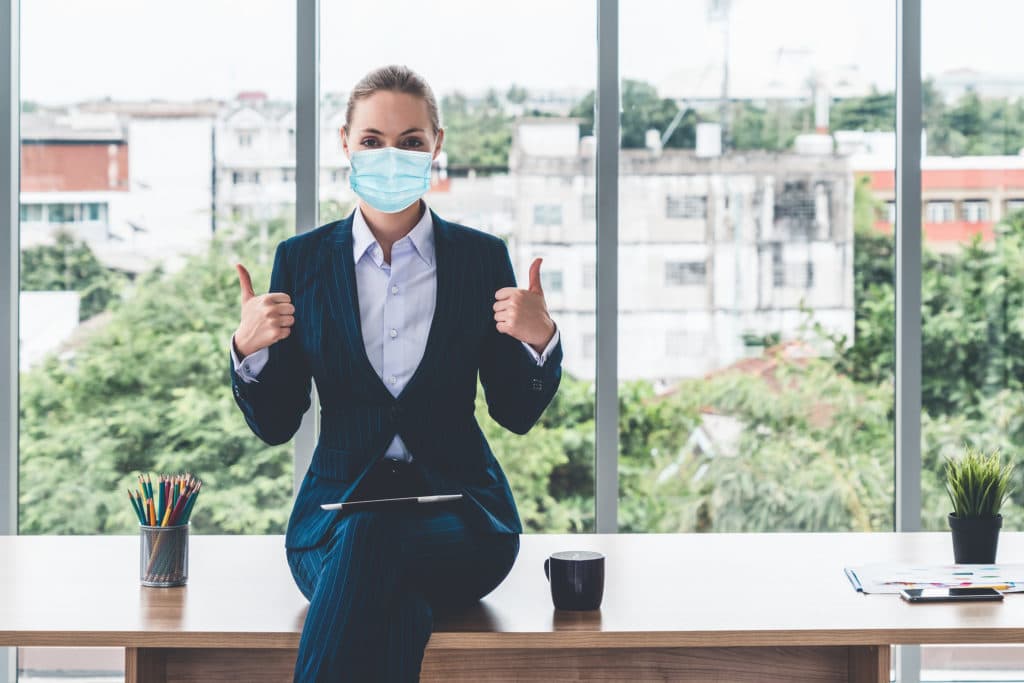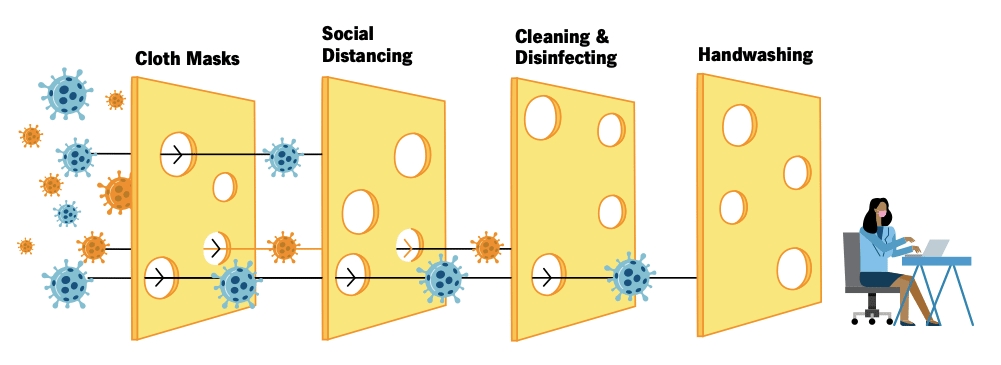
As we head into autumn, many people find themselves walking back in their office and feeling like they’re stepping back in time. They find themselves looking at calendars still stuck on a mid-March date and other reminders of their pre-pandemic work life.
For many, it’s been about six months since they’ve seen their desk and they’re returning to work with both anticipation of seeing their colleagues in person and fear that they could be more at risk of contracting COVID-19.
When the stay-at-home orders hit in the first part of the year, Fresno area businesses had to quickly seek out IT consulting to find a way to run their operations using remote employees. For some businesses, this is going to be a permanent move, but for others, they need to still have some people onsite either full or part-time.
If you have to return to working at the office, then knowing the “Swiss Cheese” approach to safety can help you reduce your risk of contracting the virus and give you more peace of mind.
What is the “Swiss Cheese” Model for Risk Mitigation?
The “Swiss Cheese” model is an approach to risk mitigation and safety that was developed in 1990 by Dante Orlandella and James Reason of the University of Manchester.
It’s been used in healthcare settings, aviation, and safety fields for years, and has recently been adopted as a smart approach to helping prevent the spread of COVID-19.
Imagine you have one layer of Swiss cheese with several holes. Each of those holes presents a certain risk that something would get through the cheese slice from one side to the other.
Now, put another slice of Swiss cheese over the second one. It also has holes (risks), but not in the same areas as the first slice. Thus, having two slices lined up, reduces the number of unimpeded holes going from one side to another.
When you line up enough slices of Swiss cheese, you can just about remove all risk by removing the number of holes that allow an opening through the entire cheese layer.
When applying the model to coronavirus safety, imagine that each safety step represents another slice of Swiss cheese (face covering, distancing, handwashing, etc.).
With several of those safety steps layered together, you can significatnly mitigate your risk of contracting the virus, as opposed to if you only used one or two of them.
Here’s an excellent graphic from the Cleveland Clinic illustrating the “Swiss Cheese” approach as it relates to being safe from COVID-19.

Safety Layers to Add to Your Workspace
There are a lot of moving parts to adjusting business for the new post-pandemic environment. This includes learning to use virtualization and cloud solutions for interacting with customers and colleagues from home and adjusting how you work when you have go into the office.
Here are several safety layers you can put in place to deploy the “Swiss Cheese” model and mitigate the coronavirus risk in your workspace.
Set Up Distancing Markers
While many offices will already have them in place, not all will. Tape put in the floor can also easily come off after just a week of people walking over it.
Set up distancing markers that are 6-8 feet in radius around your working space. You can use stand up poles with cords (like those used in lines at the bank) or another type of visual indicator to remind colleagues of where it’s safe or not safe to stand.
Use a Desk Shield
Desk shields have become a popular way to help prevent the spread of coronavirus in restaurants, classrooms, and coworking spaces. They can be made pretty easily using PCV tubing and plexiglass or plastic. You can also find them online for sale on multiple sites.
They provide another layer of protection, which can be helpful if your employer has space limitations for proper distancing or if people walk by your workspace often.
Sanitize Your Touch Surfaces
You want to regularly sanitize the touch surfaces around your workspace. This can include things like your desk, chair, phone handset, computer workstation, and other surfaces.
You can use bleach-based cleaners on non-electronics to sanitize them. (List of approved EPA disinfectants)
On electronics you should NOT use bleach or water. Instead use a solution that is at least 70% isopropyl alcohol.
Wear a Mask Whenever You Can
Another important layer, especially when you’re not distanced 6-8 feet from others or are walking through the office is to wear a mask. Masks that have more than one thin layer of fabric are preferrable. You also want to make sure it’s comfortable.
Wash Hands Frequently
There are all types of surfaces we touch in an office without even realizing it. Doors, elevator buttons, common touchpads on copiers, etc.
Frequent handwashing with soap and water can help decrease your risk of contracting the virus. When you can’t get to soap and water, use hand sanitizer.
Unity IT Has Technology Solutions for the New “Normal”
There are a lot of things that Fresno companies need to do differently now. We can help you with “contactless” technology solutions, virtualization, and more!
Contact us today to schedule a virtual office consultation at 559-297-1007 or reach out online.

